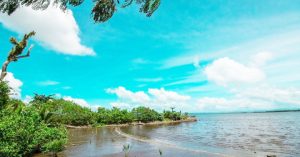TACLOBAN CITY – The Bureau of Fisheries and Aquatic Resources (BFAR) has warned against the consumption of shellfish gathered in Cancabato Bay here after meat samples turned positive for red tide toxin.

In an advisory issued Wednesday night, BFAR said paralytic shellfish toxin was found during the laboratory examination conducted by the BFAR – Regional Fisheries Laboratory in this city.
“To safeguard human lives and mitigate impacts to the shellfish industry while waiting for the BFAR central office test result, this local red tide warning is issued as a precautionary advice to the public to refrain from gathering, selling, and eating all types of shellfishes and Acetes sp., locally known as Alamang or Hipon, from this bay,” the bureau said.
Cancabato Bay is a rich source of cockle clams being shipped to Taiwan and Hong Kong.
Through testing, the fisheries bureau found that shellfish samples from the bay have 74.46 micrograms of toxins for every 100 grams of meat.
The maximum regulatory limit of toxins is 60 micrograms for every 100 grams of shellfish meat. Beyond that, the government strictly prohibits shellfish harvesting in affected areas.
The region’s laboratory also found toxins in the shellfish meat samples gathered in the coastal water of Guiuan during its test on October 27.
Meat samples gathered in Cancabato and Guiuan have been sent to the BFAR National Fisheries Laboratory for confirmatory test and inclusion in the nationwide shellfish bulletin.
Under Shellfish Bulletin 23 issued on Nov. 21, 2022 by the BFAR main office, the shellfish ban is also up in Irong-Irong Bay in Catbalogan City in Samar and San Pedro Bay in Basey town, also in Samar.
The change in weather patterns has been blamed for the red tide presence in the region, according to BFAR.
Fish, squid, crab, and shrimp gathered from these areas are safe to eat provided that all entrails are removed and the marine products are washed thoroughly with running water before cooking.
The BFAR asked local government units to heighten their watch against the gathering, trading, and consumption of shellfish to prevent the incidence of paralytic shellfish poisoning (PSP), which can occur minutes after ingesting bivalve shellfish (such as mussels, oysters, and clams) that contain red tide toxins.
Early PSP symptoms include tingling of the lips and tongue and may progress to tingling of fingers and toes and then loss of control of arms and legs, followed by difficulty in breathing.
Red tide is a term used to describe a phenomenon where the water is discolored by high algal biomass or a high concentration of algae.
(SARWELL Q. MENIANO/PNA with ROBERT DEJON)



